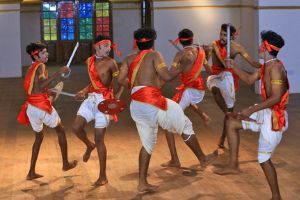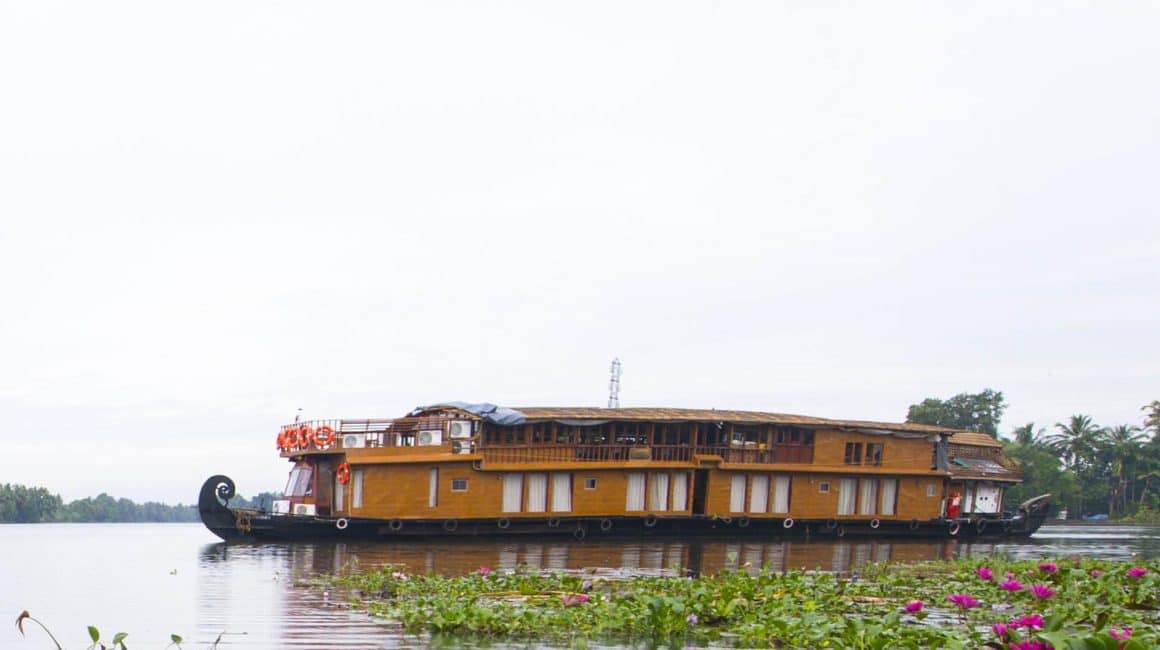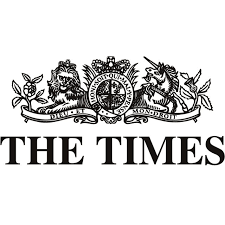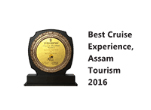KOTTAYAM, one of the most prosperous towns of Kerala is located at its central part, in the midland of hills and plains and surrounded by Meenachil river on the north, the Western Ghats on the East, the Pampa River on South and the Vembanad lagoon on the West. Kottayam is one of the oldest human habitats of the Kerala.
During the days of antiquity, the present-day’s territory, known as Kottayam, was a portion of a prominent principality – Vembolinadu which was spread across the thick forests of Western Ghats on the east and Vembanad, a bay of Arabian sea, and between the basins Periyar river on the North and the Pampa River on the southern side.
The evolution of a nature-worshipping tribal community of ancient days to a literate and progressive community, began with progress of the spice trade and Christian missionary activities during the early centuries of the common era. The Native people dwelled up on the hills of Western ghats covered by thick tropical forests, along the banks of the rivers draining into the Arabian sea through the present-day outlets of the Vembanad bay. The connectivity to the ancient sea Ports, Muziris and Purakkad through Vembanad facilitated exposure of the native community to the visiting trading communities, and inspiration to improve their own living style by venturing into agriculture, fishing and trading of the natural resources available around them.
Progressive Rulers
By the medieval period, with the disintegration of Vembolinadu, the progressive rulers of its Thekkumkoor regiment got control over the part of the fertile region which was strategically ideal for Spice trading. Considering the potential of rivers and rivulets in developing spice trade, they shifted their administrative Head Quarters to Thalikota atop a hill alongside Meenachil river.
The name Thalikkotta refers to the site of a Thali enclosed with a fort. A Thali was the meeting place of scholarly Brahmins who had dominated the society, giving advises to the Rulers.
 Thekkumkoor Dynasty
Thekkumkoor Dynasty
During the reign of the Thekkumkoor dynasty, from 12th-16th century AD, Thalikkotta, the Headquarters, the Royal household, a temple of Lord Shiva and a holy pond, were enclosed within the Fort and trenches were built around it. Markets were set up outside the Fort, along the river side, to facilitate the trading of spices and wood being brought from the hills in exchange of gold and precious stones. Thazhathangady (Thazhathe Angadi = market down the hill) and Puthangady (new market) were the trade posts and the inland port at the eastern boundary of Vembanad facilitated the transportation of these goods to the Sea ports.
These progressive and welcoming rulers encouraged the migration of trading communities and European missionaries to the hills. Among them, the Christen community could contribute significantly for the socio-economic development. They were granted land; the freedom practices their religion and to engage in agriculture and infrastructural development for the growth of trade.
School of Languages
Historical records mention about a school of languages set up near Thalikkotta by the Dutch to learn Latin, Sanskrit and Malayalam, so as for the traders and the local community to communicate well.
Thus, the economy of Thekkumkoor flourished, more and more cultivable areas were developed and variety of crops were introduced on the hills and slopes. The farsightedness and progressive outlook of the Rajas of the time transformed Kottayam into one of the best livable regions of Kerala today, with respect to environment, civility, education, economy, politics, culture and infrastructure. Natural rubber, the spices, coco, vanilla, pepper and ginger are the major crops of the region.
By the middle of the 18th century, Thekkumkoor kingdom and a few of the neighbouring small principalities were annexed to the princely state of Travancore. The new rulers referred to the territory as Kottakkakom (the literal meaning=the interior of the Fort) and the administrative centre was shifted from Thalikota to Thirunakkara, around the temple of Lord Shiva, and having the churches, the Masjid the educational institutions and the offices in close proximity. The European officials of the period had changed the name Kottakkakom to Kottayam by the nineteenth century.
The First Literate State
Kottayam, the first literate state of India is home to the first English medium school and college of the State, printing press and publishing houses of top-rated News Papers, text books and journals. Malayalam-English and English-Malayalam Dictionaries were published from Kottayam during 1846-47 . The first and the only Cooperative Society of writers, authors and publishers (SPCS), for publishing books and periodicals was formed in Kottayam.
Kottayam stands tall as producer and exporter of the natural best rubber latex of India and is home to the most affluent Christians of Kerala. Pepper, ginger, cocoa, coffee, tea are the major crops of the region.
The presence of affluent Knanaya catholic community is quite prominent in the society. They are the descendants of the Jewish-Christian community who had migrated to Kerala from southern Mesopotamia during AD 3RD century. Kottayam district has the largest Christian population in Kerala. It is the headquarters of the Knanaya Church, Malankara Orthodox Church, the Syrian Church and the Jacobites church.
Ms. Baker Memorial school for girls, MT Seminary school for boys , CMS College, BCM college for women, most circulated New Paper Malayala Manorama are a few of the prestigious institutions of Kottayam started during the period of the Travancore rulers.
 Cuisine of Kottayam
Cuisine of Kottayam
Through inheritance and acquaintance with the Portuguese, the Dutch and the British, the Christian women are gifted with culinary art and hospitality.
Kottayam-Churuttu is a unique snack of Christians in Kottayam. A crispy cone filled with a sweet mix of roasted rice, coconut, jaggery and cardamom.
Art form of Kottayam
 Margam Kali & Paricha muttu
Margam Kali & Paricha muttu
Margam Kali is the most popular Christian art form. presented in a group mainly by women, at Christian wedding ceremonies and also for Feasts at churches.The traditional performance of Margam Kali has two parts, Vattakkali (circular movement) and Parichamuttu kali (performance with sword and shield ), in rhythm with sa song describing the Christian way ( Marga) of worship into Kerala.
 The communal harmony can be witnessed at the sports tournaments, religious festivals and boat races where performers from different religious and cultural background join hands, presenting enthralling entertainment to the society.
The communal harmony can be witnessed at the sports tournaments, religious festivals and boat races where performers from different religious and cultural background join hands, presenting enthralling entertainment to the society.
The temples
The Thali temple, Thirunakkara temple, Pallippurathu Kavu, Ettumanoor temple and Vaikom temple are a few of the ancient temples in Kottayam. The festivals in these temples are spectacular with the pageantry of caparisoned elephants with the accompaniments of drums, symbols and pipes. Theeyattu, Mudiyettu, Mayilattom , Garudan Thokkoom and Kalamezhuthi pattu are some of the tribal rituals which can be watched during festivals.
During the Navratri festival (September/October), special rituals are conducted in the temple of Goddess of Wisdom -in the idyllic village -Panachikkadu- invoking the blessings for success in studies, work and creativity. Initiation of learning of children to be done at the age of 3 years is performed at this temple.
The Churches
 Valiya Palli (Literal meaning – Big church), Thazhathangady
Valiya Palli (Literal meaning – Big church), Thazhathangady
This church was built in 1550 AD by the descendants of the Syrian Knanaya Christians who migrated to India during the 3rd century AD. Two Persian crosses engraved on granite tablets, bearing inscriptions in Pahlavi language of the ancient Sassanian dynasty in Persia, are preserved here. The antique carvings and mural paintings in the church are amazing.
Cheriya Palli (Literal meaning small church), Thazhathangady
St. Mary’s Malankara Orthodox Syrian Church (Cheriya Palli) in Thazhathangady, built in 1579 AD, is one of the oldest and well-preserved churches of Kerala. This church built in the Portuguese-Baroque-Kerala style, features rich collection of striking mural art and 300year old rare paintings, depicting the life of Jesus. The Catholics of the East is the supreme head, of the church and the community is known as Marthoma Nazrani Christians.
The Christian festivals are Christmas and Easter. Holy mass, carols, setting up the cradle of baby Jesus, decoration of churches and houses with stars and festoons,, exchange of Christmas cards, sharing of Plum cakes are part of the celebrations of X’Mas.. Easter is the celebration the resurrection of Christ .following 40days lent. The breaking of the lent is accompanied by sumptuous feast and festivities and family gettogether.
 The Mosque, Thazhathangady
The Mosque, Thazhathangady
The Juma Masjid located along the bank of Meenachil river is around 1000years old. Built as per Kerala traditional carpentry, is an architectural marvel. The 2 storied Masjid is adorned with exquisite wooden carvings.
Women are allowed to pray in the mosque.
The Green Outskirts of Kottayam town
Pala Pala is a small scenic plantation township of affluent Christians.
Sr. Alphonsa, the first female Christian Saint of India belonged to the convent of the congregation of Franciscan Clarists in Braranagnam village, Pala.
Honouring the theological and moral virtues she possessed and numerous cases of miraculous cures happened through her intercession, His Holiness Pope John Paul II arrived in Kottayam to declare beatification of her as Saint in 1989. HH Benedict XVI canonised Blessed Alphonsa in 2008 at St. Peter’s Square, Rome. Govt. of India has graciously honoured the first Indian Woman Saint by releasing a commemorative postal stamp.
Sr.Alphonsa passed away in 1946, at the age of 36..The mortal remains are entombed in St.Mary’s Forane church, Bharananganam, a plantation village along the bank of Meenachil river in Pala, a prosperous small town of aristocratic affluent Christians, around 30kilomers away from Kottayam town.
Vagamon
Located at around 65kms away from Kottayam town, Vagamon, tagged by Europeans as ‘the Scotland of Asia’, sets along the fringes of Western Ghats, is a spectacular land scape of steep rocky hills, rolling meadows, cliffs, deep trenches and gushing brooks. The Belgian Cistercian monk Francis Acharya, established the Kurisumala Ashram atop a verdant hill in Vagamon, blending the spirituality of Hinduism and Christianity. It houses the monks of Cistercian order and a meditation centre for people of all faith. Tea, Coffee and Vanilla are the most commonly seen plantations of the Vagamon.
Kanjirappalli
Located at the foothills of Western Ghats, Kanjirappalli was one of the earliest habitats of the immigrant Christian families who were engaged in Commerce and agriculture. Majority of the aristocratic and affluent Christians of Kottayam own acres of Rubber plantations in this region. Pepper, ginger, nutmeg, cloves and cinnamon, Lichee and Indigo are also cultivated extensively in this region by the passionate and affluent natives.
Vambanad
Vembanad, the coastal lagoon along the western boundary of Kottayam, the second Ramsar wetland ecosystem of India, opens to the sea in Cochin. 4 major rivers Meenachil, Pampa , Manimala, Muvattupuzha traverse through Kottayam and converges into Vembanad, before draining in to the sea. With reference to the geological studies, it is believed that this coastal lagoon was formed due to the accumulation of silt and debris on the sea, carried down by the rivers from the high ranges of Western Ghats and the annual heavy monsoon rains, and consolidated over millions of years into long stretch of sand bar of around 200kms long from north to south
The salt water barrier at Thanneermukkom and spill way in Thottappalli, constructed a few decades ago, across the Vembanad controls the ingression of saline sea water in to the low-lying paddy fields and prevent flood during the monsoons.
Vembanad wetland system is home to clams and several fishes. Kumarakom lagoon on Vembanad backwaters houses Indian Darter, Little Cormorant, different species of egrets and herons, White Ibis, several species of kingfishers, waterfowl, cuckoo, owl, water duck, Siberian Cranes, parrots, teal, larks, flycatchers and wood beetles.
Cruise onboard RV Vaikundam, exploring the magnificence of the unseen Vembanad and the heritage of Kottayam, enjoying the stunning view of the expanse of low-lying paddy fields, and the soothing silence of the country sides along the ancient shipping channel of spice traders.
How does one experience Kottayam the Gateway to the western Ghats?

Cruise with us onboard RV Vaikundam to experience the melange of rituals, art and traditions which continue to nourish the social harmony of Kottayam as it had been ever before.
RV Vaikundam offers an expedition form of cruising on the Backwaters of Kerala. RV Vaikundam is a 9 cabin (1 Deluxe Cabins and 8 Superior cabins) motor vessel offering a seven-night eight-day rendezvous, from October to April.
On day 2 of the 7 night North-South Cruise we visit the village spending time with the coir weavers, the shell harvesters and farmers, engaging in conversation with them about the riparian life, and watching various indigenous techniques of fishing. Coir, one of the major exports of Kerala, is of much relevance today than ever before when plastic has become a global menace. People of Chenganda are major suppliers of this cottage industry.
The 7 night North-South Itinerary starts at Kochi and ends in Alleppey in the State of Kerala, while the 7 night South-North Itinerary starts from Alleppey to Kochi in the State of Kerala. Airport connectivity is available at Kochi. All inclusive price starts from USD 250* per person per night for base category cabins. *Terms and conditions apply.
The Itinerary is subject to weather and river conditions or if we are faced with any political challenges. The tourism season is from October to April.

















Leave a Reply
You must be logged in to post a comment.